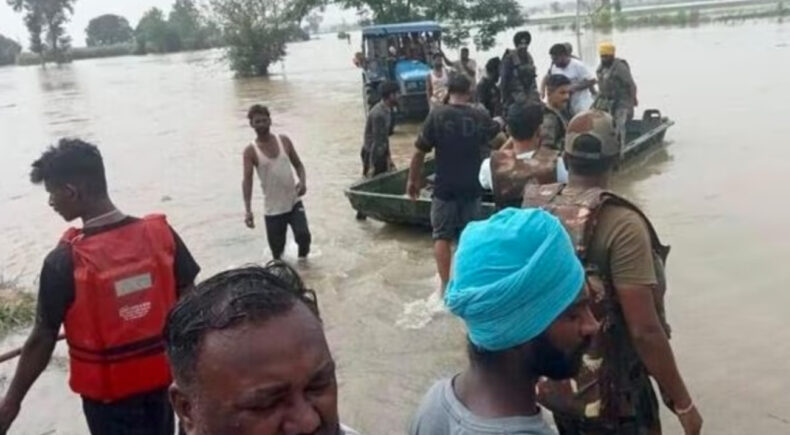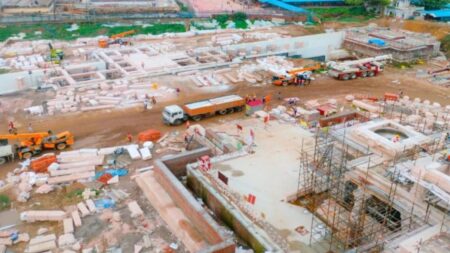In an unfortunate convergence of man-made encroachments and the unrestrained force of nature, Punjab finds itself grappling with the most severe flooding witnessed in decades. As the state commemorated Independence Day on August 15, another battle unfolded on the riverbanks—rescue efforts were underway to save those trapped by their own defiance of natural boundaries.
The Department of Water Resources solemnly reports that the relentless advance of human encroachments has wreaked havoc along the banks of the Ghaggar river. A staggering 108 locations in Punjab bore witness to its breach, leaving behind a trail of destruction and distress.
Punjab’s Rupnagar administration, led by Deputy Commissioner Preeti Yadav and supported by an NDRF team, faced a race against time. Their mission: rescuing 30 villagers who had taken refuge on the bed of the Sutlej river. Yet, as the Bhakra Beas Management Board initiated controlled water release from the near-full Bhakra dam reservoir, the Sutlej surged forth, ensnaring residents in its watery grasp. An intended aerial rescue was shelved due to logistical constraints, necessitating a plea to the BBMB to stem the water’s flow for a later rescue attempt.
Even before the deluge, Deputy Commissioner Yadav had issued evacuation advisories, imploring the encroachers to retreat. Regrettably, these pleas fell on deaf ears, leaving a tragic tale of unheeded wisdom.

Human-Made Havoc
A glaring instance of this man-made catastrophe occurred when the engorged Sutlej tore a gaping 1200-foot breach in the dhussi bandh, inundating villages in Jalandhar. This rupture was triggered by the collision with Dhakka Basti, an illicit settlement defiantly established within the riverbed.
Urban Planning or Mismanagement?
The question arises whether this grim scenario is a result of deficient urban planning. Experts like Amarjit Singh Dullet, retired Punjab chief engineer, contend that while encroachments on river lands should never have been sanctioned, political pressures often blur these boundaries. This human-made disaster underscores the need to strike a balance between development and respecting the unyielding forces of nature.
The Ripple Effect of Encroachments
A disheartening revelation comes to light as records show numerous locations along the Sutlej riverbanks where human-induced breaches occurred. These breaches exacted a heavy toll on both lives and property, serving as stark reminders of the consequences of encroachments.
Tragedy Along the Ghaggar
The Ghaggar river’s tragic breach at 108 points in Punjab, as documented by the Department of Water Resources, bears witness to the dire impact of encroachments. The Ghaggar, flowing wide in Panchkula, tapers down to 150-200 feet at Sardulgarh. Despite previous plans for widening its width, the project remains unrealized, and the consequences are now laid bare.

The aftermath reveals stark numbers—11,927 villages affected across 20 districts, accompanied by a tragic toll of 65 lives lost. Encroachments undoubtedly emerged as a primary catalyst in this disaster, a stark reminder of humanity’s ability to reshape nature’s course.
As the floodwaters subside, they leave in their wake a poignant lesson. Punjab’s Chief Minister, Bhagwant Mann, rightly observes that these floods bear testimony to nature’s disdain for obstructions in its path. The present calamity must serve as a compass for our future choices. It is a call for attuning our actions to the rhythms of nature, for forging a path where progress and preservation walk hand in hand. In this confluence of encroachments and elemental forces, let us find the wisdom to navigate a more harmonious coexistence.













